Isaac Chotiner in The New Yorker:
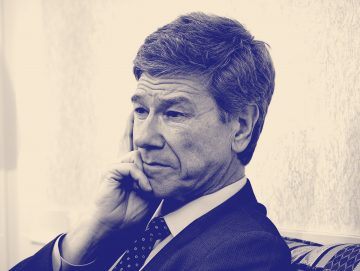 In the early nineties, the economist Jeffrey Sachs was known as a “shock therapist,” for advising the Soviet Union on its controversial transition to a free-market economy. Since then, Sachs has shifted his focus to poverty alleviation and international development, becoming one of the most visible academics in the world. His book “The End of Poverty,” from 2005, imagined a globe free of the worst forms of destitution; Sachs also attributed misgovernment in much of Africa to poverty, rather than the other way around. (This thesis was much debated by other economists and development experts who were more skeptical about the impact of foreign aid.) From 2002 to 2016, Sachs was the director of Columbia University’s Earth Institute; he is currently a professor at the university and an adviser to the United Nations. He endorsed Bernie Sanders for President in January and has occasionally advised the senator.
In the early nineties, the economist Jeffrey Sachs was known as a “shock therapist,” for advising the Soviet Union on its controversial transition to a free-market economy. Since then, Sachs has shifted his focus to poverty alleviation and international development, becoming one of the most visible academics in the world. His book “The End of Poverty,” from 2005, imagined a globe free of the worst forms of destitution; Sachs also attributed misgovernment in much of Africa to poverty, rather than the other way around. (This thesis was much debated by other economists and development experts who were more skeptical about the impact of foreign aid.) From 2002 to 2016, Sachs was the director of Columbia University’s Earth Institute; he is currently a professor at the university and an adviser to the United Nations. He endorsed Bernie Sanders for President in January and has occasionally advised the senator.
I recently spoke by phone with Sachs about the coronavirus and the challenges that the crisis poses to international coöperation and the world economy. In our conversation, which has been edited for length and clarity, we also discussed the root causes of American decline, why some poorer countries have so far avoided large outbreaks, and how Donald Trump has failed to meet even the low expectations that internationalists have for the United States.
More here.

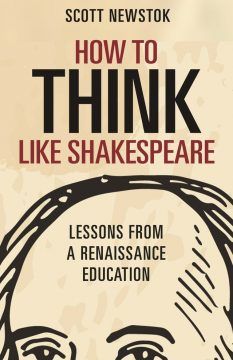 Scott Newstok’s new book,
Scott Newstok’s new book, 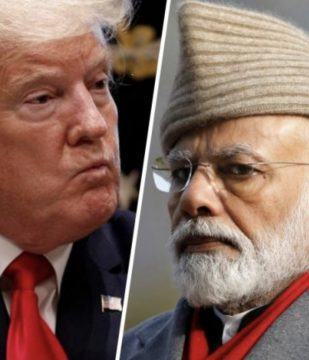 José Ortega y Gasset is a largely forgotten 20th century thinker, an unconventional Spanish philosopher whose most important social science work,
José Ortega y Gasset is a largely forgotten 20th century thinker, an unconventional Spanish philosopher whose most important social science work, 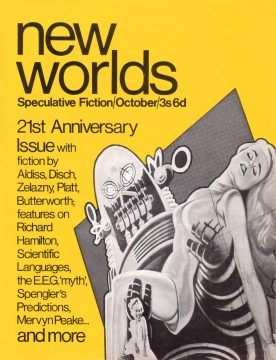 No doubt Ballard and Pevsner make strange bedfellows, but if we accept—and I think we can—that Pevsner’s charge of “outrageous stimulation” was a localized condemnation of broader tendencies, then there is a connection. For the diagnosis of “outrageous stimulation” was one that Ballard, in a strong sense, shared, although the consequences he drew were radically different. As he wrote in a later reflection: “A unique collision of private and public fantasy took place in the 1960s. … The public dream of Hollywood for the first time merged with the private imagination of the hyper-stimulated 60s TV viewer.” However for Ballard, the outcome of this was not some sort of constant escalation of experience—on the contrary “its finish line,” he wrote, “was that death of affect, the lack of feeling, which seemed inseparable from the communications landscape.” Whereas Pevsner’s demand on the cusp of the 1960s was to rein in the new license and reassert prior controls, Ballard’s suggestion was instead to embrace existing conditions and pursue their possibilities. “Given the unlimited opportunities which the media landscape now offers to the wayward imagination,” he wrote, “I feel we should immerse ourselves in the most destructive element, ourselves, and swim.” The best we can hope for of the twentieth century, he continued, is “the attainment of a moral and just psychopathology.”
No doubt Ballard and Pevsner make strange bedfellows, but if we accept—and I think we can—that Pevsner’s charge of “outrageous stimulation” was a localized condemnation of broader tendencies, then there is a connection. For the diagnosis of “outrageous stimulation” was one that Ballard, in a strong sense, shared, although the consequences he drew were radically different. As he wrote in a later reflection: “A unique collision of private and public fantasy took place in the 1960s. … The public dream of Hollywood for the first time merged with the private imagination of the hyper-stimulated 60s TV viewer.” However for Ballard, the outcome of this was not some sort of constant escalation of experience—on the contrary “its finish line,” he wrote, “was that death of affect, the lack of feeling, which seemed inseparable from the communications landscape.” Whereas Pevsner’s demand on the cusp of the 1960s was to rein in the new license and reassert prior controls, Ballard’s suggestion was instead to embrace existing conditions and pursue their possibilities. “Given the unlimited opportunities which the media landscape now offers to the wayward imagination,” he wrote, “I feel we should immerse ourselves in the most destructive element, ourselves, and swim.” The best we can hope for of the twentieth century, he continued, is “the attainment of a moral and just psychopathology.”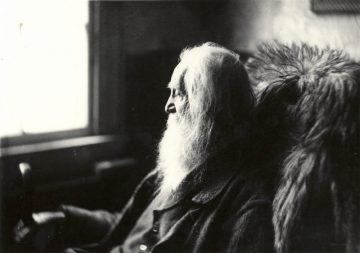 There are poets who find their strength in brevity, who use as few words as possible, arranged in the minimum number of lines, to evoke sense perception, emotion, and idea. Walt Whitman, it goes without saying, is not one of those. He is most comfortable on a broader scale. His great poems—“Song of Myself,” “The Sleepers,” “Crossing Brooklyn Ferry,” “Out of the Cradle Endlessly Rocking,” and “When Lilacs Last in the Dooryard Bloomed”—straddle hundreds of lines, providing the poet with room to catalogue particulars (The glories strung like beads on my smallest sights and hearings, he calls them), to stack up parallel statements, to address his reader, to depart from and return to his argument, and to construct a kind of poetic architecture designed to be mimetic of the process of thinking, and thus draw us more intimately near. This is why his shorter poems often feel like parts of a larger, more encompassing one; even satisfyingly complete shorter pieces such as “To You” and “This Compost” might be seen as outtakes, or gestures in the direction of some overarching intention.
There are poets who find their strength in brevity, who use as few words as possible, arranged in the minimum number of lines, to evoke sense perception, emotion, and idea. Walt Whitman, it goes without saying, is not one of those. He is most comfortable on a broader scale. His great poems—“Song of Myself,” “The Sleepers,” “Crossing Brooklyn Ferry,” “Out of the Cradle Endlessly Rocking,” and “When Lilacs Last in the Dooryard Bloomed”—straddle hundreds of lines, providing the poet with room to catalogue particulars (The glories strung like beads on my smallest sights and hearings, he calls them), to stack up parallel statements, to address his reader, to depart from and return to his argument, and to construct a kind of poetic architecture designed to be mimetic of the process of thinking, and thus draw us more intimately near. This is why his shorter poems often feel like parts of a larger, more encompassing one; even satisfyingly complete shorter pieces such as “To You” and “This Compost” might be seen as outtakes, or gestures in the direction of some overarching intention.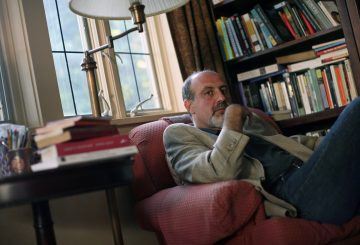 Nassim Nicholas Taleb is “irritated,” he told Bloomberg Television on March 31st, whenever the
Nassim Nicholas Taleb is “irritated,” he told Bloomberg Television on March 31st, whenever the 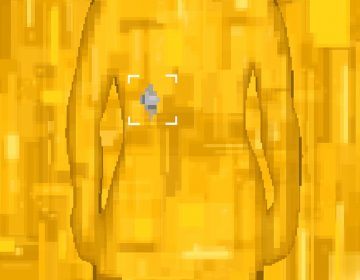 When a young girl came to New York University (NYU) Langone Health for a routine follow-up, tests seemed to show that the medulloblastoma for which she had been treated a few years earlier had returned. The girl’s recurrent cancer was found in the same part of brain as before, and the biopsy seemed to confirm medulloblastoma. With this diagnosis, the girl would begin a specific course of radiotherapy and chemotherapy. But just as neuropathologist Matija Snuderl was about to sign off on the diagnosis and set her on that treatment path, he hesitated. The biopsy was slightly unusual, he thought, and he remembered a previous case in which what was thought to be medulloblastoma turned out to be something else. So, to help him make up his mind, Snuderl turned to a computer.
When a young girl came to New York University (NYU) Langone Health for a routine follow-up, tests seemed to show that the medulloblastoma for which she had been treated a few years earlier had returned. The girl’s recurrent cancer was found in the same part of brain as before, and the biopsy seemed to confirm medulloblastoma. With this diagnosis, the girl would begin a specific course of radiotherapy and chemotherapy. But just as neuropathologist Matija Snuderl was about to sign off on the diagnosis and set her on that treatment path, he hesitated. The biopsy was slightly unusual, he thought, and he remembered a previous case in which what was thought to be medulloblastoma turned out to be something else. So, to help him make up his mind, Snuderl turned to a computer. When the virus
When the virus Human beings have a strange fascination with dangerous, predatory animals — bears, lions, wolves, sharks, and more. The top of the food chain is an interesting and precarious place to live; while you might be the boss of your local environment, you also depend on the functioning of an entire ecology. Rae Wynn-Grant is a carnivore ecologist who studies how large predators migrate, feed, reproduce — and especially how they interact with humans. We talk about the diverse social structures of different species of carnivores, how they find mates, and how they diversify their diet. And of course we discuss how humans and other locally-dominant species can live together peacefully.
Human beings have a strange fascination with dangerous, predatory animals — bears, lions, wolves, sharks, and more. The top of the food chain is an interesting and precarious place to live; while you might be the boss of your local environment, you also depend on the functioning of an entire ecology. Rae Wynn-Grant is a carnivore ecologist who studies how large predators migrate, feed, reproduce — and especially how they interact with humans. We talk about the diverse social structures of different species of carnivores, how they find mates, and how they diversify their diet. And of course we discuss how humans and other locally-dominant species can live together peacefully.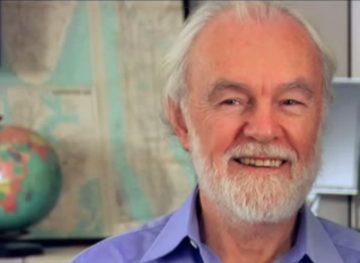 When trying to interpret, understand and analyse the daily flow of news, I tend to locate what is happening against the background of two distinctive but intersecting models of how capitalism works. The first level is a mapping of the internal contradictions of the circulation and accumulation of capital as money value flows in search of profit through the different “moments” (as Marx calls them) of production, realisation (consumption), distribution, and reinvestment. This is a model of the capitalist economy as a spiral of endless expansion and growth. It gets pretty complicated as it gets elaborated through, for example, the lenses of geopolitical rivalries, uneven geographical developments, financial institutions, state policies, technological reconfigurations and the ever-changing web of divisions of labour and of social relations. I envision this model as embedded, however, in a broader context of social reproduction (in households and communities), in an on-going and ever-evolving metabolic relation to nature (including the “second nature” of urbanisation and the built environment) and all manner of cultural, scientific (knowledge-based), religious and contingent social formations that human populations typically create across space and time. These latter “moments” incorporate the active expression of human wants, needs and desires, the lust for knowledge and meaning and the evolving quest for fulfilment against a background of changing institutional arrangements, political contestations, ideological confrontations, losses, defeats, frustrations and alienations, all worked out in a world of marked geographical, cultural, social and political diversity. This second model constitutes, as it were, my working understanding of global capitalism as a distinctive social formation, whereas the first is about the contradictions within the economic engine that powers this social formation along certain pathways of its historical and geographical evolution.
When trying to interpret, understand and analyse the daily flow of news, I tend to locate what is happening against the background of two distinctive but intersecting models of how capitalism works. The first level is a mapping of the internal contradictions of the circulation and accumulation of capital as money value flows in search of profit through the different “moments” (as Marx calls them) of production, realisation (consumption), distribution, and reinvestment. This is a model of the capitalist economy as a spiral of endless expansion and growth. It gets pretty complicated as it gets elaborated through, for example, the lenses of geopolitical rivalries, uneven geographical developments, financial institutions, state policies, technological reconfigurations and the ever-changing web of divisions of labour and of social relations. I envision this model as embedded, however, in a broader context of social reproduction (in households and communities), in an on-going and ever-evolving metabolic relation to nature (including the “second nature” of urbanisation and the built environment) and all manner of cultural, scientific (knowledge-based), religious and contingent social formations that human populations typically create across space and time. These latter “moments” incorporate the active expression of human wants, needs and desires, the lust for knowledge and meaning and the evolving quest for fulfilment against a background of changing institutional arrangements, political contestations, ideological confrontations, losses, defeats, frustrations and alienations, all worked out in a world of marked geographical, cultural, social and political diversity. This second model constitutes, as it were, my working understanding of global capitalism as a distinctive social formation, whereas the first is about the contradictions within the economic engine that powers this social formation along certain pathways of its historical and geographical evolution.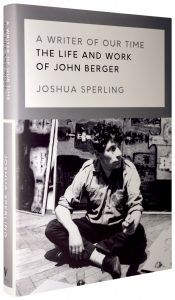 For John Berger, who began not as a dreamer of the maelstrom but a campaigner for tradition, the very concept of the total transformation, sudden and exhilarating, was something he came to only later, after his hopes for postwar unity had dissolved. His early taste of political disappointment was in this sense unusual. It was not that the revolution of his youth had gone wrong or failed to come, but that the revolutions that did come, whether cultural (from America) or political (in the Eastern bloc), were of the wrong kind, from the wrong quarters. Meanwhile, the artistic New Deal he tried to encourage, as if brick-by-brick, was buckling under the weight of its own ambition. Like a rising tide, middle-class prosperity brought with it a host of new attitudes and aspirations: so-called “ad-mass” culture, “never had it so good” Macmillanism, the Americanized cult of cool.
For John Berger, who began not as a dreamer of the maelstrom but a campaigner for tradition, the very concept of the total transformation, sudden and exhilarating, was something he came to only later, after his hopes for postwar unity had dissolved. His early taste of political disappointment was in this sense unusual. It was not that the revolution of his youth had gone wrong or failed to come, but that the revolutions that did come, whether cultural (from America) or political (in the Eastern bloc), were of the wrong kind, from the wrong quarters. Meanwhile, the artistic New Deal he tried to encourage, as if brick-by-brick, was buckling under the weight of its own ambition. Like a rising tide, middle-class prosperity brought with it a host of new attitudes and aspirations: so-called “ad-mass” culture, “never had it so good” Macmillanism, the Americanized cult of cool.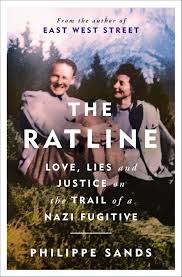 The Ratline traces the life of Otto von Wächter, an Austrian aristocrat who served as governor of the district of Kraków in Nazi-occupied Poland, then later, handpicked by Hitler, as governor of the district of Galicia, in present-day Ukraine. Wächter was complicit in myriad atrocities, including the virtual eradication of Galicia’s Jewish population; less than 3 per cent survived. Wächter also collected art, attended concerts and held elegant soirées with his wife, Charlotte. He played chess with Hans Frank, who was later hanged at Nuremberg for his central role in the Holocaust. He socialised with the Himmler family. The SS Reichsführer inscribed a book he gave to Wächter, ‘With my best wishes on your birthday – H Himmler, 8 July 1944’. Hitler welcomed Wächter’s initiative to form the Waffen-SS Galicia Division, and in 1944 the Führer granted his forty-something governor life tenure as a civil servant with full pension rights.
The Ratline traces the life of Otto von Wächter, an Austrian aristocrat who served as governor of the district of Kraków in Nazi-occupied Poland, then later, handpicked by Hitler, as governor of the district of Galicia, in present-day Ukraine. Wächter was complicit in myriad atrocities, including the virtual eradication of Galicia’s Jewish population; less than 3 per cent survived. Wächter also collected art, attended concerts and held elegant soirées with his wife, Charlotte. He played chess with Hans Frank, who was later hanged at Nuremberg for his central role in the Holocaust. He socialised with the Himmler family. The SS Reichsführer inscribed a book he gave to Wächter, ‘With my best wishes on your birthday – H Himmler, 8 July 1944’. Hitler welcomed Wächter’s initiative to form the Waffen-SS Galicia Division, and in 1944 the Führer granted his forty-something governor life tenure as a civil servant with full pension rights.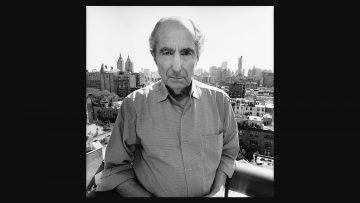 Delirious near the end
Delirious near the end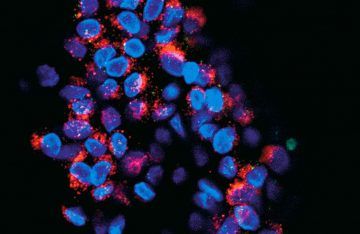 The treatment was never going to work. Ryan Corcoran, an oncologist at Massachusetts General Hospital, Boston, didn’t realize this when he began treating his patient’s colorectal cancer in 2014. His team picked a therapy on the basis of genetic testing of a portion of the person’s cancer, and initially the treatment performed well. But before long, it faltered amid overwhelming tumour resistance. It was only when the person had a liquid biopsy, a test based on analysis of stray tumour DNA in the blood, that Corcoran learnt why the treatment the team had selected was doomed to failure. “There was a mutation known to cause resistance to that drug, which wasn’t present in the tissue biopsy but was fairly abundant in the blood sample,” he says. “If we had just biopsied a different lesion, we might’ve picked an entirely different therapy.” The experience demonstrated the benefits of searching the blood for answers. Now, blood-based biopsies are commonplace at his hospital, and are increasingly used in cancer centres around the world.
The treatment was never going to work. Ryan Corcoran, an oncologist at Massachusetts General Hospital, Boston, didn’t realize this when he began treating his patient’s colorectal cancer in 2014. His team picked a therapy on the basis of genetic testing of a portion of the person’s cancer, and initially the treatment performed well. But before long, it faltered amid overwhelming tumour resistance. It was only when the person had a liquid biopsy, a test based on analysis of stray tumour DNA in the blood, that Corcoran learnt why the treatment the team had selected was doomed to failure. “There was a mutation known to cause resistance to that drug, which wasn’t present in the tissue biopsy but was fairly abundant in the blood sample,” he says. “If we had just biopsied a different lesion, we might’ve picked an entirely different therapy.” The experience demonstrated the benefits of searching the blood for answers. Now, blood-based biopsies are commonplace at his hospital, and are increasingly used in cancer centres around the world.